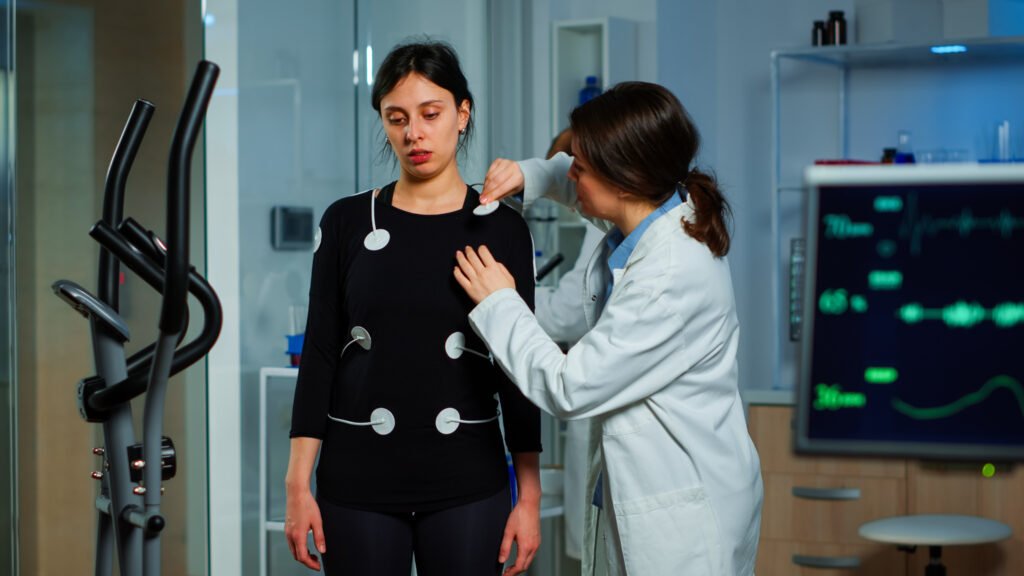Introduction
Respiratory therapists are an essential allied health profession whose members evaluate and care for patients with disorders of the cardiopulmonary system. All of them work either in hospitals or as part of an outpatient clinic, nursing home, or home care facility. They deal with many patients suffering from asthma, COPD, and pneumonia whom they take care of in acute or long-term emergency cases. Their profession makes a significant part of today’s health care. The COVID-19 pandemic opened further recognition of this profession as RTs were at the forefront of attending to respiratory issues and managing life-support systems such as ventilators.
The Important Role of a Respiratory Therapist
Assessing- Diagnosing Condition in Breathing Problems
The most serious condition primarily handled by the respiratory therapist is to assess patients who have breathing difficulty. They perform diagnostic tests such as spirometry, peak flow measurements, arterial blood gas (ABG) analysis, and so forth to ascertain lung function. They measure the amounts of oxygen and carbon dioxide in the blood through arterial blood gas analysis. These are critical values used to diagnose certain respiratory disorders such as chronic bronchitis, emphysema, pulmonary fibrosis, and so forth. Their assessment warrants timely intervention, which can make the difference between saving lives in the acute care setting.
Development of treatments through effective implementation.
Following diagnosis, the respiratory therapists works with the physician to develop an individualized treatment plan for each patient. Most likely, such a plan includes distribution of supplemental oxygen, bronchodilator therapies, nebulized therapy, thoracic physiotherapy, and more, and may include plans for rehabilitation of affected patients— especially the long-term ones— via pulmonary rehabilitation programs.
Managing Ventilators and Life-Support Equipment

In the ICU and the emergency room, the important functions of RTs include initiating and managing mechanical ventilation for patients who cannot breathe on their own. This generally includes setting up a machine for mechanical ventilation, adjusting ventilator parameters as necessary for a particular patient, and maintaining airway access. They would have to be observant for signs of respiratory distress so they can intervene quickly to avoid complications.
Educating Patients and Families
Education, another aspect of a respiratory therapist’s job, teaches patients how to use inhalers, nebulizers, and oxygen equipment to receive proper therapy without misuse. It also includes counsels to patients and families on how chronic illness can be managed, quit smoking, and assessing and reducing environmental irritants exposure. Knowledge is power-the more a patient knows, the more they can improve their outcome and reduce visits to the hospital.
Challenges Encountered by Respiratory Therapists
High-Stress Environments
Respiratory therapists mostly work in hectic environments such as ICUs, emergency departments, and trauma units. They are to work on their toes, call on their fast decision-making capabilities, and above all retain their composure while confronting life or death scenarios. Such environments can often wear down the physical and mental stamina of respiratory therapists over time if not dealt with adequately.
Infection Risk and Physical Strain

Respiratory therapists are highly exposed when working closely with patients suffering from infectious diseases. These therapists must wear personal protective equipment properly and follow hygiene protocols. Besides, the work can be physically demanding, requiring staying on their feet for long hours while lifting patients or carrying instrumentation.
Keeping Up with Improvements in Medicine
The field of respiratory therapy is fast changing with the introduction of new treatment approaches, new devices, and new technologies. RTs need to uphold a culture of lifelong learning through continuing education and certification with hands-on training to stay up to date and provide quality care. This commitment ensures proficiency in new innovations, including high-flow oxygen therapy, smart inhalers, and digital monitoring tools.
The Future of Respiratory Therapists
Growing Demand in Health System
Employment for respiratory therapists is projected to grow 14 percent from 2021 to 2031, much faster than the average for all occupations, according to the U.S. Bureau of Labor Statistics. Some of the major factors driving such growth include the aged population, increased incidence of chronic respiratory diseases, and increased awareness of respiratory health. As the existing health systems are expanded to provide additional services, the demand for competent RTs is sure to escalate.
Technological Fusion and Innovation
Development in medical technology owes its renovation of respiratory care. Portable ventilators, automated oxygen delivery systems, and AI-enabled diagnostic tools are easing the way for the rapid and precise provision of care by RTs. Such tools improve patient outcomes as much as they streamline the workflow for healthcare teams. RTs must therefore integrate these innovations into their practice to remain in the forefront of an intensely competitive healthcare setting.
Moving Toward Preventative and Community-Based Care
RTs are gradually moving beyond hospitals to work in communities. Many RTs are getting into public health campaigns that educate communities about air quality, smoking-related lung diseases, and early signs of respiratory distress. Through the promotion of preventive care or early intervention, RTs are lowering hospital admission rates and healthcare costs.
Conclusion
To summarize respiratory therapists are valuable, if not indispensable health professionals in modern healthcare. They can manage respiratory conditions, operate life-saving equipment, and educate patients, making them integral components of patient management for chronic and acute respiratory illnesses. As medical technology progresses and the demand for respiratory-related care increases, the need for dedicated and well-trained respiratory therapists will only continue to grow. These compassionate heroes of healthcare are defined most by their excellence and sensitivity. You can find more updates on healthcare job listings and industry insights by following us on our website: Allied Health Jobs.
Follow us on Social Media: LinkedIn | Facebook | Twitter | Instagram












